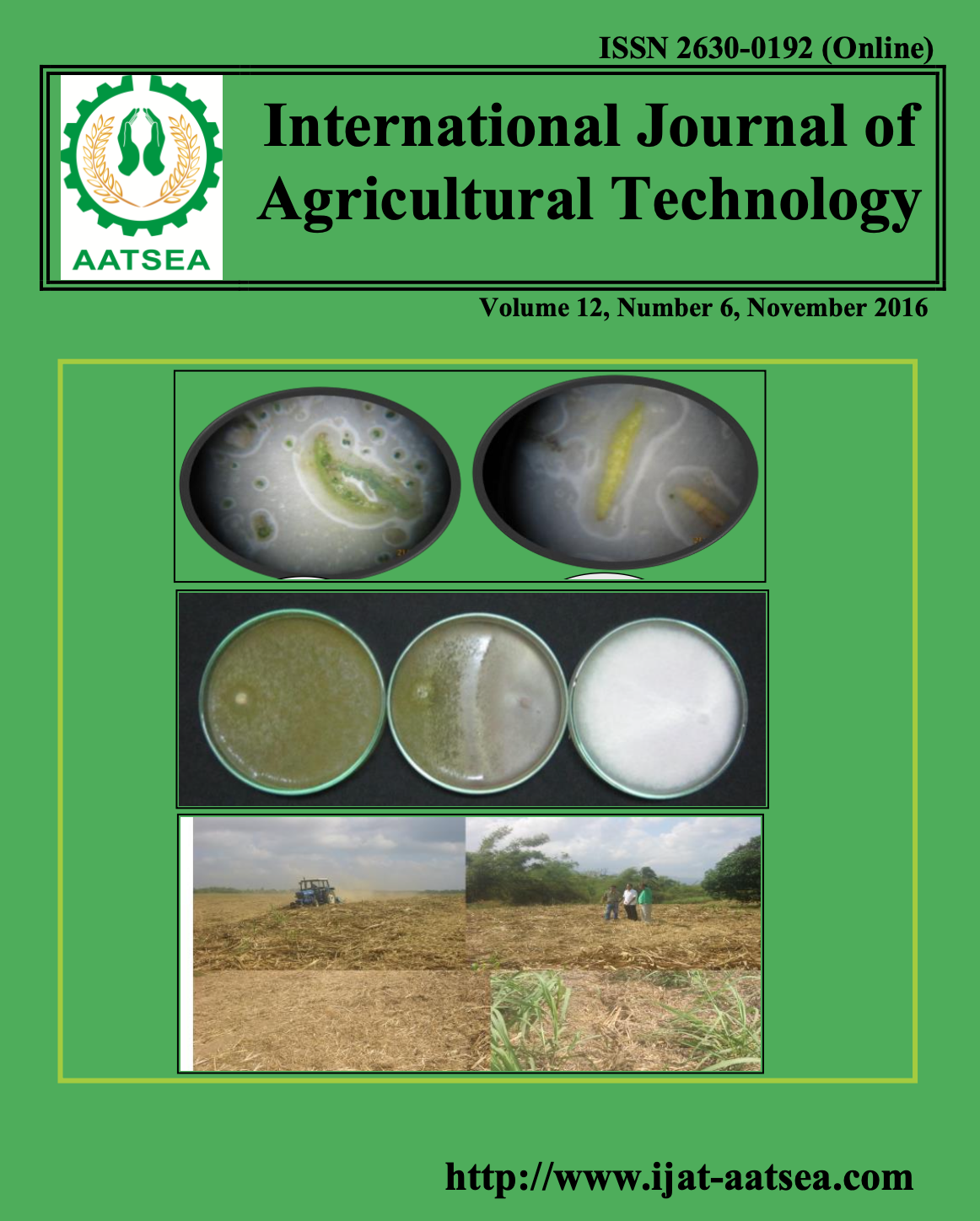Research to produce biological products of Chaetonium to control fungal diseases on tea, coffee and rubber
Main Article Content
Abstract
Article Details

This work is licensed under a Creative Commons Attribution-NonCommercial-NoDerivatives 4.0 International License.
References
Di Pietro, A., Gut-Rella, M., Pachlatko, J. P. and Schwinn, F. J. (1992). Role of antibiotics produced by Chaetomium globosum in biocontrol of Pythium ultimum, a causal agent of damping-off. Phytopathology 82:131-135.
Doke, N., Miura, Y., Chai, H. B. and Kawakita, K. (1991). Involement of action oxygens induction of plant defense response against infection and injury. Active oxygen/oxidative stressand plant metabolism. American Society of plant Physiology, Rockville. pp. 84-96.
Hong, L. T. A. (2005). Chaetomium fungi applied research in the production of biological products and plant protection fungal disease prevention; Scientific and Technical Review Report, the Agricultural Genetics Institute, MARD.
Jayasinghe, C. K. (2001). Check list of rubber pathogens in Sri lanka. National Science Foundation of Sri Lanka.
Munasinghe, H. L. (1971) Black root disease of Hevea caused by Xylaria thwaitesii. Quarterly journal Rubber Research Institute of Ceylon 48:92-99.
Rutherford, M. A. (2006). Pests and diseases of coffee in Eastern Africa: A Technical and advisory manual. CABI Africa Regional Centre.
Soytong, K. (1989). Antagonism of Chaetomim cupreum to Pyrialaria oryzae: a case study to biocontrol of a rice blast disease. Thai Phytophathology 9:28-33.
Soytong, K. (2007). Disease management for biological agriculture. Faculty of Agricultural Technology, KMITL, Bangkok, Thailand.
Soytong, K. and Quimio, T. (1989). A taxonomic study on the philippine species of Chaetomium. The Philippine Agriculturist 72:59-72.
Soytong, K. and Quimio, T. H. (1989). Antagonism of Chaetomium globosum to the rice blast pathogen, Pyricularia oryzae. Kasetsart Journal (Natural Science) 23:198-203.
Talubnuc, C. and Soytong K. (2010). Biocontrol of vanina anthracnose using Emericella nidulans. Journal of Agricultural technology 6:47-55.
Tevit, M. and Moore, M. B. (1954). Isolate of Chaetomium that protect oats from Heminthosporium victoriae. Phytopathology 44:686-689.
Vannacci, G. and Harman G. E. (1978). Biocontrol of seedborn Alternaria raphani and A. brassicicola. Canadian Journal of Microbiology 33:850-856.
Vien, N. V., Tu, N. T. and Cong, B. V. (2012). Research production and use of Trichoderma viride prevent fungal diseases root zone, potatoes, peanuts, soybeans. Journal of Science and Development 10:95-102.


